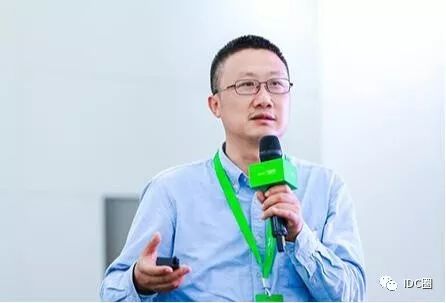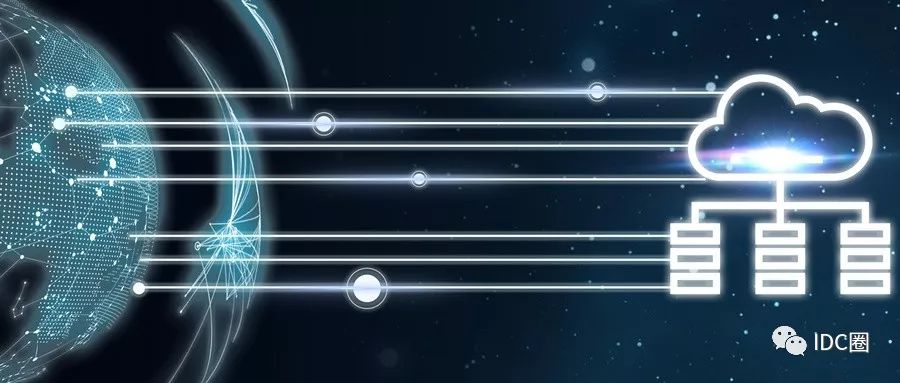As cloud computing enters its explosive growth period, data center development has also made great progress. However, the resulting high energy consumption has become a focus of public attention. Some institutions estimate that by 2025, the electricity consumed by global data centers will account for one-fifth of the world's total electricity generation. In this context, how to improve data center management efficiency and reduce energy consumption by using new technologies has become a topic of widespread concern in the industry.

Mr. Shi Baochun, Chief Technical Advisor of Schneider Electric's Key Power Business Unit
At the Schneider Electric Innovation Summit recently, a reporter from China IDC Circle interviewed Shi Baochun, Chief Technical Advisor of Schneider Electric's Critical Power Business Unit, and asked him to express his views on related issues.
In the context of digital transformation of enterprises, many traditional enterprises have moved to the cloud. According to relevant survey data, global public cloud service and infrastructure spending will reach US$210 billion in 2019, an increase of 23.8% over 2018. This fully demonstrates that many traditional enterprises have begun to change their thinking and embrace cloud computing. This phenomenon has also extended to the data center field. In traditional understanding, intelligent management is often limited to installing sensors, cameras and other monitoring equipment at the end of the equipment. By collecting the underlying equipment data and uploading it for analysis, valuable information can be extracted, such as adjusting or controlling the equipment temperature or load. Although this model can solve the problem of information transmission and analysis optimization, and perform trend prediction and estimation at the same time, it requires the deployment of relevant platforms in the data center, and also requires the data center to be equipped with corresponding professional operation and maintenance personnel. Mr. Shi Baochun believes that this phenomenon will change in the future, thanks to the popularity of the cloud, and cloud services will be an important development direction for data centers in the future. By building the platform on the cloud, the heavy work that traditionally needs to be done by the data center operator can be handed over to Schneider Electric experts. For example, Schneider Electric experts on the cloud can help enterprises analyze and manage the system operation of the entire data center, so that users do not need to separately equip professional operation and maintenance teams. Schneider Electric's expert team may even discover potential risks and potential failures of equipment earlier than users. Moreover, the cloud platform is linked to Schneider Electric's engineers and spare parts warehouses. Once a problem is found, engineers, spare parts warehouses and other resources can be mobilized immediately to solve the problem in advance before the user notices it. The advantage of doing this is that it reduces the operation and maintenance costs of the data center while improving its management efficiency. As mentioned above, the high energy consumption of data centers has become a sensitive topic in the industry, and green data centers will become a trend. So what is green? First of all, it is the energy supply to data centers, such as the use of photovoltaic, wind power, and hydropower to gradually replace thermal power. However, many sources need to be adapted to local conditions and are difficult to promote universally. For example, wind power in Inner Mongolia and Zhangbei is not applicable in southern cities such as Guangdong and Fujian. Then, at this time, the green data center must be interpreted from another level, that is, to improve the energy utilization rate of the data center through advanced solutions and technologies. Among them, power management is a very important part. Mr. Shi Baochun believes that with the increasing application of lithium batteries in UPS, the power management of data centers will also undergo fundamental changes in the future, such as the concept of energy storage. As we all know, unlike the lead-acid batteries currently used in data center UPS, lithium batteries are superior to traditional lead-acid batteries in terms of cycle life, rapid charge and discharge capabilities, and density. In the future, the pressure on the power grid can be reduced by storing electricity during the trough of electricity consumption and then discharging it during peak periods, while achieving the goal of green. In fact, the country's green requirements for data centers are also because the power grid is under too much pressure during peak hours. If there is an energy storage function, the pressure on the power grid will be reduced. The energy storage function will make a great contribution to both green and TCO, meeting both the government's green PUE requirements and the client's requirements to reduce TCO, which is a win-win situation. The general view in the industry now is that the construction cost will increase significantly if a power system with lithium batteries is deployed. But in fact, when considering costs, we should not start from the simple construction cost, but should consider the full life cycle cost. Because the construction cost often only accounts for 30% of the full life cycle cost of the system, and the remaining 70% is the operation and management cost. Mr. Shi Baochun said that taking the colloid battery with better performance among lead-acid batteries as an example, this type of battery is currently widely used among high-end users such as finance and communications. The cost difference between a colloid battery with a 15-minute backup power supply and a lithium battery is actually not much. But lithium batteries can be charged and discharged more than 8,000 times, and can also store energy. In addition, lithium batteries are equipped with a management system as standard, and do not require later human intervention and maintenance. In contrast, the daily operation and maintenance of lead-acid batteries is very cumbersome. Finally, regarding the construction cost, driven by the rise in international lead prices, the price of lead-acid batteries has been rising. However, the price of lithium batteries is falling. Mr. Shi Baochun believes that the price trends of lead-acid batteries and lithium batteries will have an intersection in the next two to three years, when the costs of the two will be consistent, and lithium batteries will become the trend due to their performance advantages.

Previous article:Multi-cloud complexity is the biggest pain point for enterprises. Commvault helps enterprises on their multi-cloud journey
Next article:Qualcomm and ZTE Collaborate to Expand 5G Cloud Gaming Use Cases Based on Live Network Environments
- Popular Resources
- Popular amplifiers
- e-Network Community and NXP launch Smart Space Building Automation Challenge
- The Internet of Things helps electric vehicle charging facilities move into the future
- Nordic Semiconductor Launches nRF54L15, nRF54L10 and nRF54L05 Next Generation Wireless SoCs
- Face detection based on camera capture video in OPENCV - Mir NXP i.MX93 development board
- The UK tests drones equipped with nervous systems: no need to frequently land for inspection
- The power of ultra-wideband: reshaping the automotive, mobile and industrial IoT experience
- STMicroelectronics launches highly adaptable and easy-to-connect dual-radio IoT module for metering and asset tracking applications
- This year, the number of IoT connections in my country is expected to exceed 3 billion
- Infineon Technologies SECORA™ Pay Bio Enhances Convenience and Trust in Contactless Biometric Payments
- Innolux's intelligent steer-by-wire solution makes cars smarter and safer
- 8051 MCU - Parity Check
- How to efficiently balance the sensitivity of tactile sensing interfaces
- What should I do if the servo motor shakes? What causes the servo motor to shake quickly?
- 【Brushless Motor】Analysis of three-phase BLDC motor and sharing of two popular development boards
- Midea Industrial Technology's subsidiaries Clou Electronics and Hekang New Energy jointly appeared at the Munich Battery Energy Storage Exhibition and Solar Energy Exhibition
- Guoxin Sichen | Application of ferroelectric memory PB85RS2MC in power battery management, with a capacity of 2M
- Analysis of common faults of frequency converter
- In a head-on competition with Qualcomm, what kind of cockpit products has Intel come up with?
- Dalian Rongke's all-vanadium liquid flow battery energy storage equipment industrialization project has entered the sprint stage before production
- Allegro MicroSystems Introduces Advanced Magnetic and Inductive Position Sensing Solutions at Electronica 2024
- Car key in the left hand, liveness detection radar in the right hand, UWB is imperative for cars!
- After a decade of rapid development, domestic CIS has entered the market
- Aegis Dagger Battery + Thor EM-i Super Hybrid, Geely New Energy has thrown out two "king bombs"
- A brief discussion on functional safety - fault, error, and failure
- In the smart car 2.0 cycle, these core industry chains are facing major opportunities!
- The United States and Japan are developing new batteries. CATL faces challenges? How should China's new energy battery industry respond?
- Murata launches high-precision 6-axis inertial sensor for automobiles
- Ford patents pre-charge alarm to help save costs and respond to emergencies
- New real-time microcontroller system from Texas Instruments enables smarter processing in automotive and industrial applications
- SHT31 Review - In-depth Review
- 【McQueen Trial】+ Unboxing and Assembly
- Using nRF24L01 with MicroPython
- [Help Post] High-frequency oscillation of high-frequency switching power supply current
- SHT31 Review - Unboxing and First Impressions
- IoT security himqtt firewall data structure ringbuffer ring buffer
- EEWORLD University Hall----Live Replay: TI's Latest Application of Millimeter-Wave Radar in the Automotive Field
- Changes in car rear lighting design
- EEWORLD University - Tektronix will teach you the oscilloscope usage skills you don't know
- [Download Gift] Demonstrate Multi-channel Signal Spectrum Analysis Using the Spectrum View Function of the New Tektronix MSO6 Oscilloscope

 Deep Learning Made Easy: Core Algorithms and Visual Practice (Feng Chao)
Deep Learning Made Easy: Core Algorithms and Visual Practice (Feng Chao)











 京公网安备 11010802033920号
京公网安备 11010802033920号